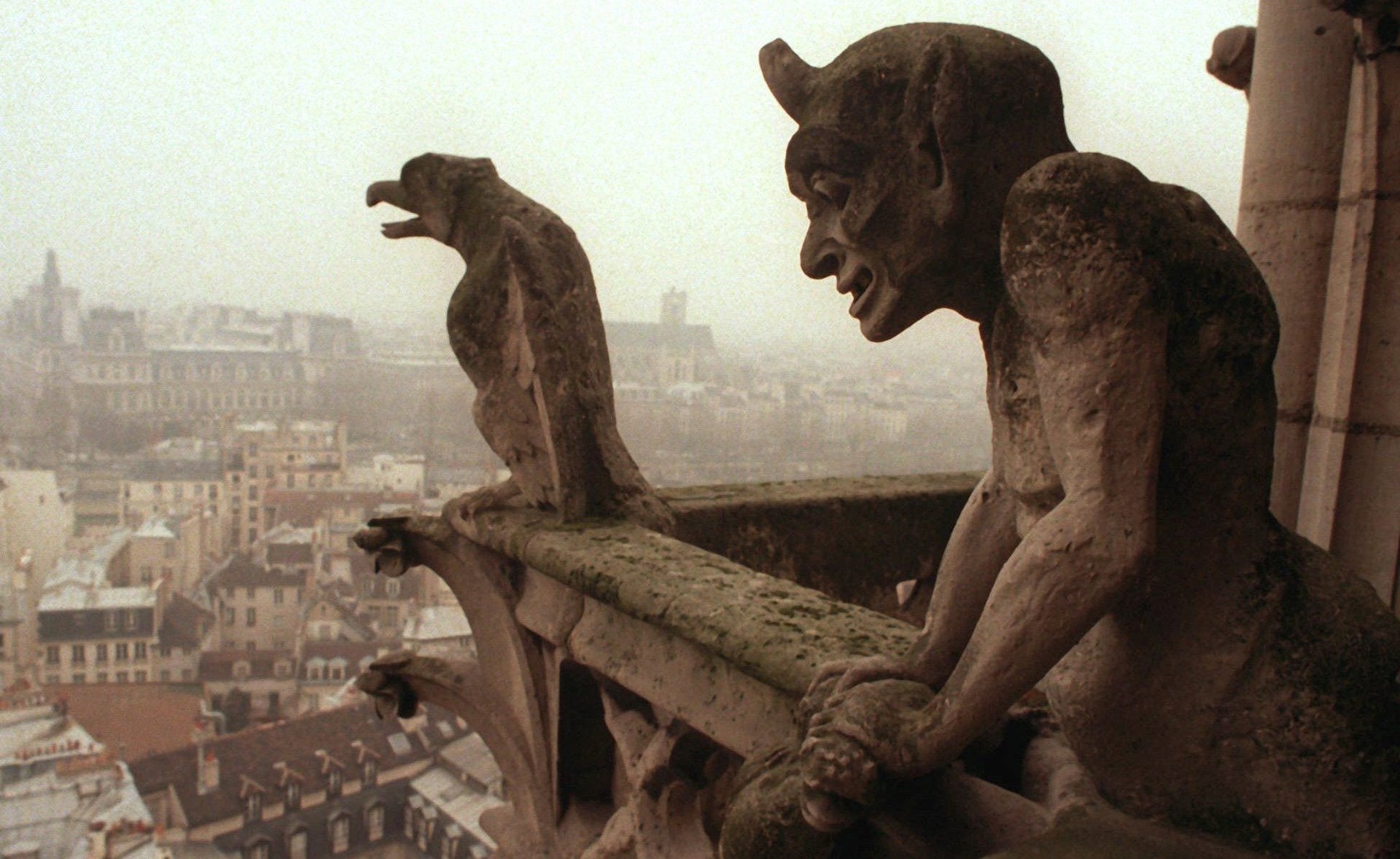Victor Hugo wrote “The Hunchback of Notre Dame” to help preserve the cathedral
Just shy of a couple centuries ago, Notre Dame was in such a state of disrepair and so deeply unpopular with Parisians that Victor Hugo felt compelled to write a book in its defense. Published in 1831 in France, The Hunchback of Notre Dame was originally titled Notre-Dame de Paris, leaving no ambiguity about its true subject.


Just shy of a couple centuries ago, Notre Dame was in such a state of disrepair and so deeply unpopular with Parisians that Victor Hugo felt compelled to write a book in its defense. Published in 1831 in France, The Hunchback of Notre Dame was originally titled Notre-Dame de Paris, leaving no ambiguity about its true subject.
As Richard Buday wrote in 2017, “The Hunchback is a Gothic novel about a Gothic building. The story’s moral focus is Notre-Dame cathedral. Architecture sets the stage, backdrops the major characters, and forever binds their fates. The story’s central character isn’t a person; it’s a building, which Hugo considered sentient.”
Hugo began his public campaign as an architectural preservationist in 1825, when he published a pamphlet entitled “Guerre aux demolisseurs!” or “War on the Demolishers.” He aimed to bring attention to the Gothic architecture he viewed as an essential part of French cultural history and saw as endangered by the new penchant for Baroque buildings.
With the story of Quasimodo, the deformed foundling abandoned at the cathedral, Hugo captured the popular imagination. Quasimodo lived out his days as the bell-ringer of Notre Dame in the 1400s. “One might almost say that he had assumed its form,” Hugo wrote of his protagonist, “as the snail takes on the form of its shell.”
The metaphor was not lost on readers who mourned for Quasimodo and rallied for the cathedral’s restoration. In 1844, a project began that would include the addition of elements considered essential to Notre Dame—and now emblematic of tragic loss. The 56 chimera lining the balcony connecting the bell towers and the 750-ton spire were among them.
There is a moment in The Hunchback of Notre Dame when the archdeacon Claude Frollo looks from a book to the cathedral and pronounces: “This will kill that.”
The story took place in the 15th century, during the advent of the printing press. Scholars have interpreted the line to refer both to the danger that the spread of ideas posed to the church and also to the idea that literature might replace architecture as an esteemed form of communication.
But today it’s clear that the written word will not endanger the church. Even as flames engulfed Notre Dame, the appreciation that Hugo poured onto the page will, in some sense, preserve it:
His cathedral was sufficient for him. It was peopled with marble figures—kings, saints, bishops—who at least did not burst out laughing in his face, and who gazed upon him only with tranquillity and kindliness. The other statues, those of the monsters and demons, cherished no hatred for him, Quasimodo. He resembled them too much for that. They seemed rather, to be scoffing at other men. The saints were his friends, and blessed him; the monsters were his friends and guarded him. So he held long communion with them. He sometimes passed whole hours crouching before one of these statues, in solitary conversation with it. If any one came, he fled like a lover surprised in his serenade.
And the cathedral was not only society for him, but the universe, and all nature beside. He dreamed of no other hedgerows than the painted windows, always in flower; no other shade than that of the foliage of stone which spread out, loaded with birds, in the tufts of the Saxon capitals; of no other mountains than the colossal towers of the church; of no other ocean than Paris, roaring at their bases.
What he loved above all else in the maternal edifice, that which aroused his soul, and made it open its poor wings, which it kept so miserably folded in its cavern, that which sometimes rendered him even happy, was the bells. He loved them, fondled them, talked to them, understood them. From the chime in the spire, over the intersection of the aisles and nave, to the great bell of the front, he cherished a tenderness for them all. The central spire and the two towers were to him as three great cages, whose birds, reared by himself, sang for him alone.